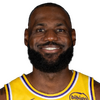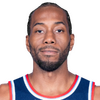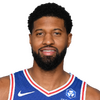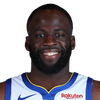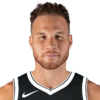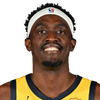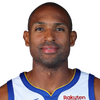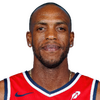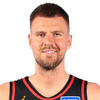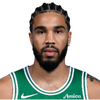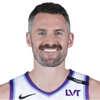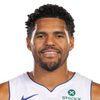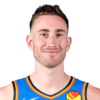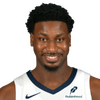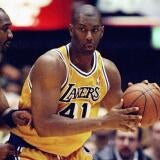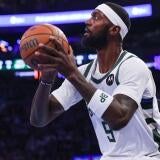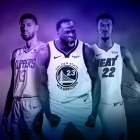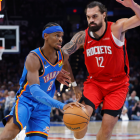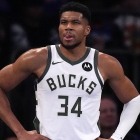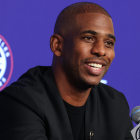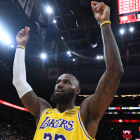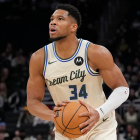Ranking NBA's 20 best forwards: Takeaways from the league's most versatile position group
Just about every kind of player fills these rankings of the top 20 forwards in the NBA.
Centers dominated the NBA for most of its early history. There are more star point guards in the NBA than any other position. But make no mistake, the current league belongs to forwards.
The last nine Finals MVPs have fallen under that banner, and it has more regular-season MVPs this century than either guards or centers do. Four of the top five players on our list of the Top 100 players in the NBA were forwards, and the top seven players on this list all fall in the top 14.
In honor of our Top 100 NBA rankings, let's take a look at the top 20 forwards in basketball, keeping in mind the following rules:
- Rankings are based on our list of the top 100 players in the league.
- Players are eligible to be ranked at multiple positions. Anthony Davis, for instance, is both a forward and a center.
- Both small forwards and power forwards are eligible. Anyone who falls under the forward umbrella would be considered.
And so, here are the top 20 forwards in the NBA.
| 1 |
LeBron James
Los Angeles Lakers SF
|
| It stands to reason that the best player in the NBA would be the best at his position. The argument most have levied against James is, essentially, that a player his age shouldn't be this good, or healthy. Well guess what? He is, and King James' revenge tour is going to be one for the ages. | |
| 2 |
Kawhi Leonard
Los Angeles Clippers SF
|
| James may be the best forward in the NBA, but Leonard is the most prototypical. He is not a bigger point guard. He does not slide up to center in smaller lineups. His job is to score points and prevent the best wing on the other team from doing the same. He does it with a cold efficiency befitting the second-best player in basketball. | |
| 3 |
Giannis Antetokounmpo
Milwaukee Bucks PF
|
| Leonard is what forwards used to look like. Antetokounmpo is, hopefully, what they one day might look like. To say he does everything on the court is almost underselling his impact. Milwaukee's entire existence as a contender is made possible by his freakish athleticism and growing skill. If he adds a consistent 3-point shot, he'll top this list for the next decade. | |
| 4 |
Anthony Davis
Los Angeles Lakers PF
|
| Davis is here strictly because he wants to be. He is optimally a center, but prefers playing power forward to preserve his body. Most players aren't effective enough at multiple positions to make that choice. Davis is so good that his teams consistently allocate resources to finding centers just to placate him. Even out of position, Davis is a top-five player in basketball. | |
| 5 |
Paul George
Los Angeles Clippers SF
|
| George was arguably better than everyone on this list in the past regular season. He ultimately finished in third in MVP voting, but if he had stayed healthy, he could easily have won the award. Like Leonard, he is a prototypical scorer and defender. What you see is what you get, and what you get is one of the 10 best players in basketball. | |
| 6 |
Draymond Green
Golden State Warriors PF
|
| Ask yourself a simple question: How good must a seven-point scorer be at practically everything else to garner a top-12 ranking in the entire NBA? The answer is nearly flawless. Fortunately, Green lives up to that billing and then some. | |
| 7 |
Jimmy Butler
Miami Heat SF
|
| His defense may be slipping, he's never been an elite 3-point shooter and his locker-room antics would terrify most organizations. But despite all of that, there are few players more comfortable with the ball in their hands than Butler. His teams contend. Teams that lose him tend not to. | |
| 8 |
Blake Griffin
Detroit Pistons PF
|
| Griffin only dunked 37 times last season. That was good for 94th in the NBA. The high-flyer of the Lob City days is gone, replaced by a more methodical, and in many ways more effective, point forward. The Pistons relied on Griffin to create most of their offense last season, and he delivered in getting them into the playoffs. | |
| 9 |
Pascal Siakam
Toronto Raptors PF
|
| Siakam was the NBA's Most Improved Player last season, but you can make the argument that he is still a candidate to win the award again this season. With Leonard gone, the Raptors now belong to Siakam, and his scoring still has plenty of room to grow. | |
| 10 |
Al Horford
Philadelphia 76ers C
|
| Everything said about Draymond Green applies to Horford as well, but with the added benefit that Horford actually does a bit of scoring. Few players have no holes in their game, but Horford is one of them. | |
| 11 |
Khris Middleton
Milwaukee Bucks SF
|
| Middleton may play second-fiddle to the MVP, but he is an All-Star in his own right. He manages to perform the duties of both a role player and a star at once, playing stellar defense and spacing the floor while also contributing 18.3 points per game. | |
| 12 |
Kristaps Porzingis
Dallas Mavericks PF
|
| Like Davis, Porzingis is a center cosplaying as a forward. And like Davis, it hardly makes a difference. Porzingis is so talented that he could thrive in just about any role. | |
| 13 |
LaMarcus Aldridge
San Antonio Spurs PF
|
| The power forward position isn't dead yet. In a league desperate to produce Draymond Green clones, Aldridge continues chugging along. Even as a 33-year-old last season, he managed to make the All-Star game with his old-school scoring and rebounding. | |
| 14 |
Jayson Tatum
Boston Celtics SF
|
| When LeBron James stared him in the eye, he didn't blink. Tatum was fine as a rookie and disappointing as a sophomore, but for two months in the spring of 2018, Tatum held his own against the best player of his generation and nearly took the Celtics to the NBA Finals. That gives him leeway no other young player gets, and a spot on this list despite fairly underwhelming numbers. | |
| 15 |
Kevin Love
Cleveland Cavaliers PF
|
| Love may be stuck on a lottery team now, but if he proves he's healthy, he could turn into a big factor in the playoff race. His defense will always be questionable, but years supporting James as a role player have made fans forget just what a devastating offensive player he can be when properly featured. | |
| 16 |
Tobias Harris
Philadelphia 76ers SF
|
| Harris has now played for five NBA teams, and he just seems to get better with each passing organization. Now a cornerstone of the co-Eastern Conference favorite Philadelphia 76ers, Harris could well be the closer on a team lacking traditional perimeter scoring. | |
| 17 |
Danilo Gallinari
Oklahoma City Thunder SF
|
| Years of injuries have taken their toll, but Gallinari was finally healthy last season and became the go-to guy in the starting lineup for the Los Angeles Clippers. Like Love, he'll be a highly-coveted trade asset and could make a real difference in the playoff race. | |
| 18 |
Gordon Hayward
Boston Celtics SF
|
| Hayward would have finished far higher than 18th on this kind of list prior to the ankle injury that ended his 2017-18 season before it really began. He likely finished above No. 18 on most lists of top overall players. The mere hope that the old Hayward is still in there gets him a spot on this list. | |
| 19 |
Paul Millsap
Denver Nuggets PF
|
| You won't find many sturdier power forwards than Millsap. The veteran comes to work, puts up between 10 and 20 points, plays great defense and provides excellent leadership in his locker room. It's not fancy, but it's more than deserving of a spot on this list. | |
| 20 |
Jaren Jackson Jr.
Memphis Grizzlies PF
|
| What do you get when you cross Davis' body with Horford's skill set? One of the best young players in all of basketball. Jackson is set to follow up an impressive rookie campaign with a breakout sophomore year. | |
So, what can we take away from this list? Here are the three biggest takeaways:
1. Forwards contain multitudes
Some players on this list, like James and Green, are point guards in the shape and size of a forward. Others, like Davis and Horford, are functionally centers and will play quite a few minutes there this season. Just about every playing style is represented on this list. Typically, the idea of positionless basketball comes down to having as many forwards on the floor as possible. They represent the compromise between center size and guard ball skills. As such, this list is far more stylistically diverse than one of guards or centers would be.
2. Teamwork makes the dream work
The No. 1 forward (James) and the No. 4 forward (Davis) are on the same team. So are No. 2 (Leonard) and No. 5 (George), and No. 3 (Antetokounmpo) and No. 11 (Middleton). Leonard played with No. 9 (Siakam) last season, and No. 6 (Green) spent the last three seasons with Kevin Durant, who may have topped this list if he was healthy. Star forward tandems are a rarity in NBA history, but they are becoming more and more common. The success of the Lakers and Clippers this season could set a template that teams follow for years to come.
3. Who's Next?
Only three players on this list are on rookie deals: Siakam, Tatum and Jackson. This is unsurprising considering the two-way responsibilities of the position. Forwards need to be two-way players, so developing takes longer than offensively-focused guards or rim-protecting centers. That makes it harder to predict who is coming up the pipeline. Siakam certainly wouldn't have made this list a year ago. Now, he's in the top 10.


